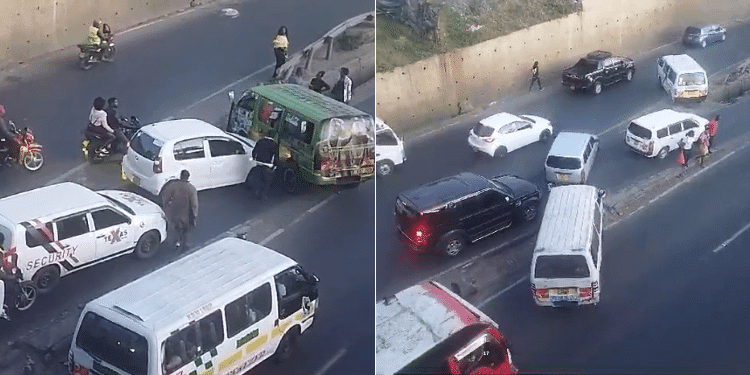Deadly mob justice incident in Kiamaiko sparks ethnic protests.
Somali youth stage demonstrations; rival group responds with force.
Motorists attacked, vehicles vandalized along Kariobangi–Allsops stretch.
Outering Road shut down as violence spirals beyond police control.
Riot officers deployed as authorities scramble to prevent escalation.
Ethnic War Erupts on Outering Road as Mob Justice Sparks Bloody Clashes
A Quick Recap of This Story
What should have been a routine Thursday afternoon in Nairobi turned into a brutal display of unchecked rage and deep-rooted ethnic hostility. The flashpoint: Kiamaiko, where a suspected thief met a violent death at the hands of a mob. But what followed wasn’t just another act of street justice—it triggered a chain reaction that transformed one of Nairobi’s busiest corridors into a war zone.
Shortly after the incident, youth believed to be from the Somali community erupted in protest. Their message was unmistakable: they weren’t just grieving a death, they were rejecting a pattern. They believed the lynching was targeted, another example of discrimination veiled as justice. And so, they took their outrage to the streets.
Outering Road, particularly the stretch from Kariobangi to Allsops, was swallowed by smoke and fear as demonstrators lit fires and erected makeshift barricades.
An Unnamed Enemy Enters the Scene
But as one group protested, another mobilized—less organized but equally violent. A rival faction, whose identity remains unclear, retaliated against the protesters. What began as a politically charged demonstration instantly devolved into ethnic clashes. Rocks were hurled, vehicles stoned, and innocent motorists caught in the chaos found themselves robbed or assaulted.
Panic spread faster than the flames on the tarmac. Traffic ground to a halt. Entire blocks were transformed into no-go zones. People living and working nearby locked themselves indoors, watching helplessly as Outering Road, a crucial artery in Nairobi’s transport system, turned into a front line.
Motorists Trapped, Pedestrians Hunted
For the unfortunate motorists caught in the midst of this battle, escape was near impossible. Several were intercepted mid-transit, dragged out of their vehicles, and forced to abandon their belongings. Others, trying to navigate through barricades or plead their innocence, were roughed up or looted. It was open season, with little distinction between bystanders and supposed enemies.
Frantic alerts flooded social media. “Avoid Outering Road,” read one widely circulated warning. “Rival youth groups are fighting. Cars are being attacked.” The city, once again, had lost control of its streets—and residents knew better than to wait for official statements.
A Known Hotspot Reignites

Outering Road is no stranger to unrest. In recent months, protests have repeatedly ignited violence along this critical route. From looted businesses to fiery demonstrations over police brutality and government neglect, the area has become synonymous with Nairobi’s broader failures—failed infrastructure, failed security, and now, failed cohesion.
The stretch around Kariobangi, in particular, has seen a disturbing spike in both fatal accidents and public outrage. But what makes this latest unrest different is its ethnic overtone. This isn’t just about anger; it’s about identity, territory, and resentment simmering over years of marginalization.
Security Forces Outnumbered and Outpaced
Despite the Nairobi police deploying riot units by mid-afternoon, the damage was already done. The officers struggled to hold ground against the roaming groups of irate youth. Fires burned well into the evening, and the air around Kiamaiko reeked of both tear gas and uncertainty.
Reports from residents indicate that police were more reactive than strategic, pushing protesters back in one area only for new clashes to flare up elsewhere. It was a game of whack-a-mole in a city that has grown used to crisis management instead of conflict resolution.
A City Repeating Its Mistakes
Thursday’s unrest wasn’t just an isolated incident—it was a brutal reminder of Nairobi’s fragility. The city’s growing ethnic divisions, coupled with chronic neglect from authorities, make it a ticking time bomb. Every injustice—real or perceived—is a match waiting to be struck.
Unless the state begins to deal with root causes—ethnic marginalization, mob justice, poor policing, and unresponsive governance—these flare-ups will only intensify. Nairobi is not just burning; it’s boiling over.
And Outering Road? It’s now the frontline in a silent war the city refuses to confront.

0 comments
Be the first one to comment, but before that...
Here are some best practices for writing comments: